The Bosch D-Tect 150 Wallscanner uses Ultra-Wide Band (UWB) radar technology and is the first detector at a sub-$1000 price point that detects rebar, water-filled PVC, copper piping (non-ferrous metal), wood studs, and live wiring. The Bosch Wallscanner D-Tect150 does more than detect these materials, though, it gives the user material type, depth, and relative width information.
Bosch D-Tect 150 Wallscanner Features
The Bosch D-Tect 150 Wallscanner works through concrete, wet concrete, and even deep concrete up to 6″. In fact, you can use it in any of seven modes where you can select the surface material (or object, as in ‘metal’ mode) you wil be scanning:
- Concrete – 3-1/8″
- Wet concrete – 2-3/8″
- Deep (cured) concrete – 6″
- In-floor heating – 3-1/8″
- Drywall – 3-1/8″
- Metal – 2-3/8″
- Signal view – 6″
Bosch claims the D-tect 150 beats conventional wall scanners in the marketplace because it’s more accurate and reads to a greater depth. The onboard UWB radar multi-sensor technology can locate material beneath the surface of concrete, drywall, or other materials (like Hardibacker board), and the backlit LCD shows you the detection depth, material type, and the center and edges of an object. Its signal view mode helps distinguish different material through the height of the curve. In ruler view mode, the D-tect150 will also act as a tape measure by displaying the distance from the start of scanning while still being able to detect objects.
Bosch D-Tect 150 Wallscanner Specs
- Max detection depths:
- Copper Wiring: Up to 3-1/8-in (80mm)
- Ferrous Metals (Steel): Up to 6-in. (150mm)
- Non-Ferrous Metals (Copper): Up to 6-in. (150mm)
- Wood Substructures (Studs): Up to 1-1/2-in (38mm)
- Water-Filled Plastic Pipe: Up to 2-3/8-in (60mm)
- Dimensions: 4.7 x 8.7 x 3.8-in
- Weight (lbs.): 1.6 lbs (0.37kg)
Bosch D-TECT150 UWB Radar
The unique UWB radar and multi-sensor technology really present a product that can accurately scan, and present incredibly precise detail on, objects located beneath the surface of most building materials. It’s also easy to read. Bosch uses an illuminated backlit LCD that gives you feedback on the detection depth, material type, and even the center and edges of an object. It doesn’t just let you detect objects, it lets you pencil them in on walls and floors as if you had X-ray vision. In a sense, I guess you kind of do
In Signal View mode, the D-Tect 150 can aid in differentiating material through the height of the curve. Ruler View mode lets the D-Tect 150 function as a tape measure by displaying the distance from the start of the scan. It does all this while still displaying the composition and detection of objects.
Maintenance and Calibration Free
Bosch claims that the D-Tect is maintenance-free and calibration-free. It handles up to 1000 scans on a single set of non-rechargeable batteries. The unit features an ergonomic rubberized handle that sits atop the unit. Guide wheels allow the unit to move horizontally across walls without marring the surface or sliding around. In this way, it is very precise. You can adjust the sound—and the LED light flashes green to indicate no object, red when an object is detected, and flashing red when there is a live wire.
The D-Tect 150 Wall/Floor Scanner is already on shelves and measures 8-3/4″ x 3-7/8″ x 4-3/4″. It weighs just 1.5 lbs. and comes with a carrying case and 4 AA batteries. It sells for around $709, so it may not be for those looking for a more general solution.

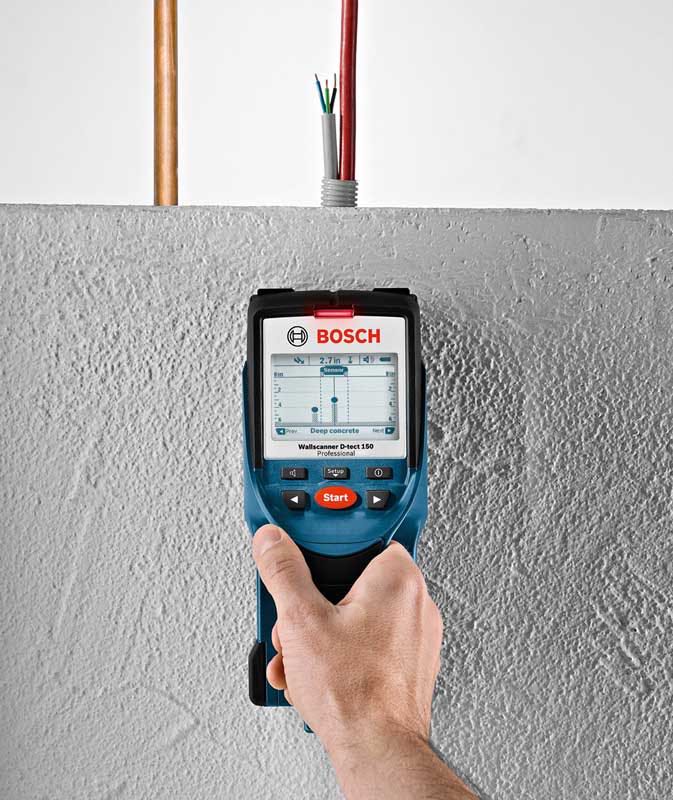
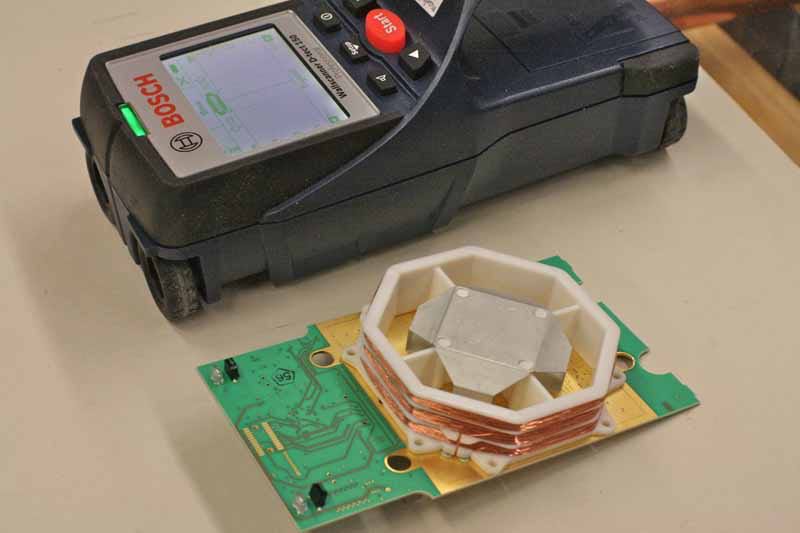
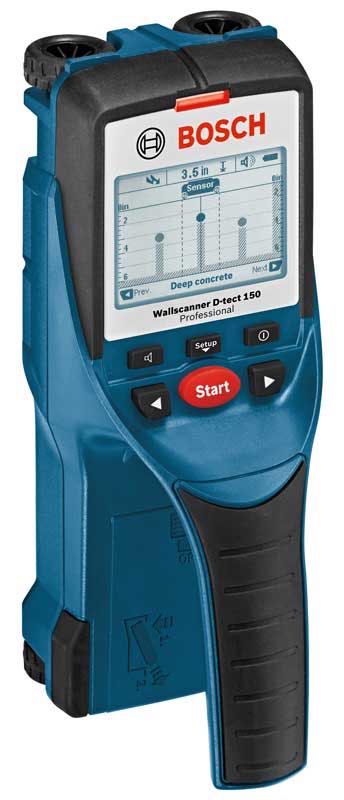
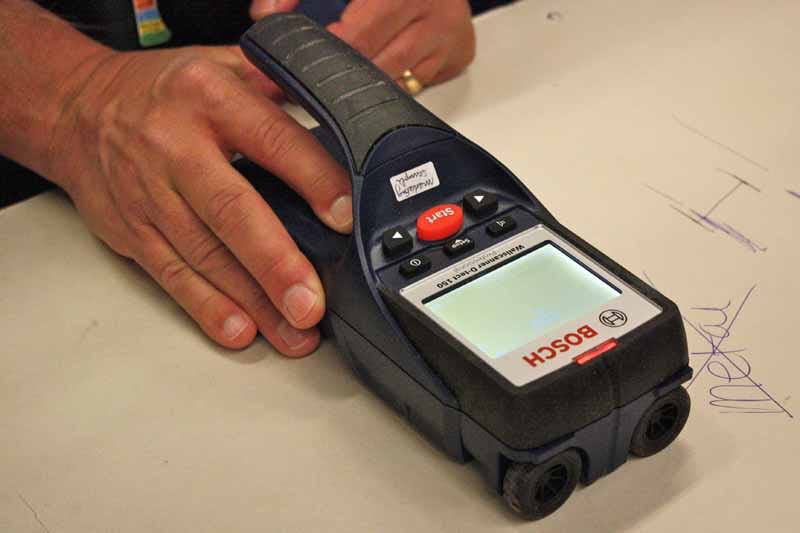
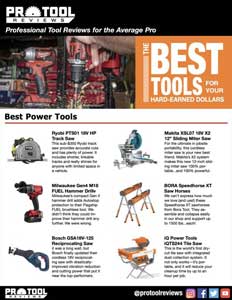

Can this be used to find rafters on a comp shingle roof with 100% accuracy?